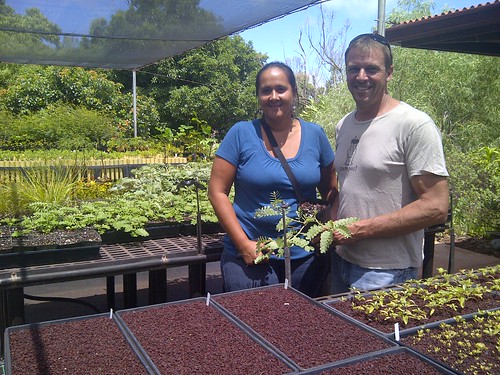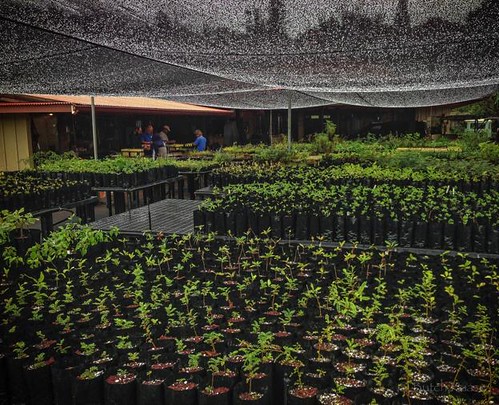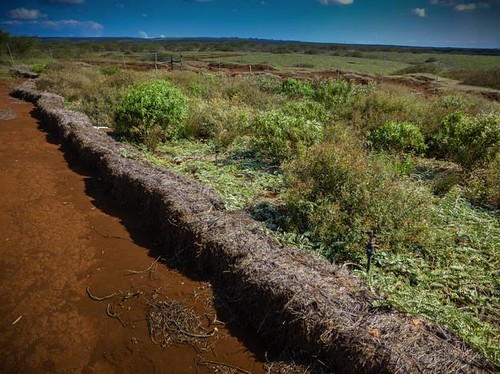
NRCS Soil Conservationist Jessica Ludgate with Molokai Land Trust Executive Director Butch Haase monitor growth of native plants at Hui Ho'olana’s nursery. NRCS photo. Photo used with permission.
The Molokai Land Trust (MLT) is a partner of USDA’s Natural Resources Conservation Service in its efforts to restore native landscapes on the Island of Molokai in Hawaii. MLT and NRCS have partnered together on many projects, including the one highlighted in this post. Justin Fritscher, NRCS.
The endangered wedge-tailed shearwater and other at-risk plant and wildlife species find sanctuary in the coastal dune ecosystem of Hawaii. But like many native ecosystems in the state, this one suffers from the effects of human development and invasive plants and animals.
In an effort to restore ecosystems in the region, the Molokai Land Trust, or MLT, on the Island of Molokai, is working to restore and replant native vegetation and remove threats from invasive species.
MLT is working with USDA’s Natural Resources Conservation Service, which provides technical and financial assistance for conservation improvements.
Much of the lowland and dryland areas of the Hawaiian Islands have been severely degraded by human impact and introduction of invasive plant and animal species. In many of these areas, the typical landscape is more reminiscent of dry Africa rather than Hawaii.
This change in land has serious impacts for the wedge-tailed shearwater, a seabird native to the tropical Pacific Ocean and Indian Ocean regions, as well as a number of plant species.
Four years ago, MLT’s staff discovered a single endangered ohai plant growing in its Mokio Preserve just outside of the land enrolled in a conservation program offered by NRCS.
It may have been a century since the ohai plant was last documented in this area, and only two other sites further east of the Mokio Preserve have naturally occurring populations of ohai. The total number of wild plants on the island is probably less than 50.

The nursery operation produces more than 15,000 plants each year for the Molokai Land Trust. Molokai Land Trust photo. Photo used with permission.
MLT collected seeds from this one plant and cultivated the seedlings in a nursery located at a partnering nonprofit education center, Hui Ho`olana.
To re-establish populations of endangered plants in the wild, it is critical that a native ecosystem be restored. Introduced species are typically aggressive to native plants and require more water and nutrients, often crowding out native species.
The Mokio Preserve’s coastal dune ecosystem has an average canopy height of about six inches, easily overwhelmed by invasive species like kiawe, lantana and non-native grasses and forbs. These introduced species create a canopy up to 12 feet tall, shading out natives.
Additionally, introduced Axis deer also threaten the native ecosystem, preferring to browse on native plants rather than introduced plants.
With the help of NRCS, MLT removed all invasive plant materials from the area and planted the new ohai plants, grown from the collected seeds, as well as other native plants. NRCS also provides assistance for MLT to continue to manage weeds.
Earlier this year, MLT discovered some good news – their conservation efforts are working. MLT documented the first nesting burrow of the wedge-tailed shearwater in May. They hope to continue to discover more as the landscape is restored to its natural conditions.

NRCS is working with the Molokai Land Trust to curb erosion and restore native plant communities in the interior of the Mokio Preserve, too. Molokai Land Trust photo. Photo used with permission.
No comments:
Post a Comment
Note: Only a member of this blog may post a comment.